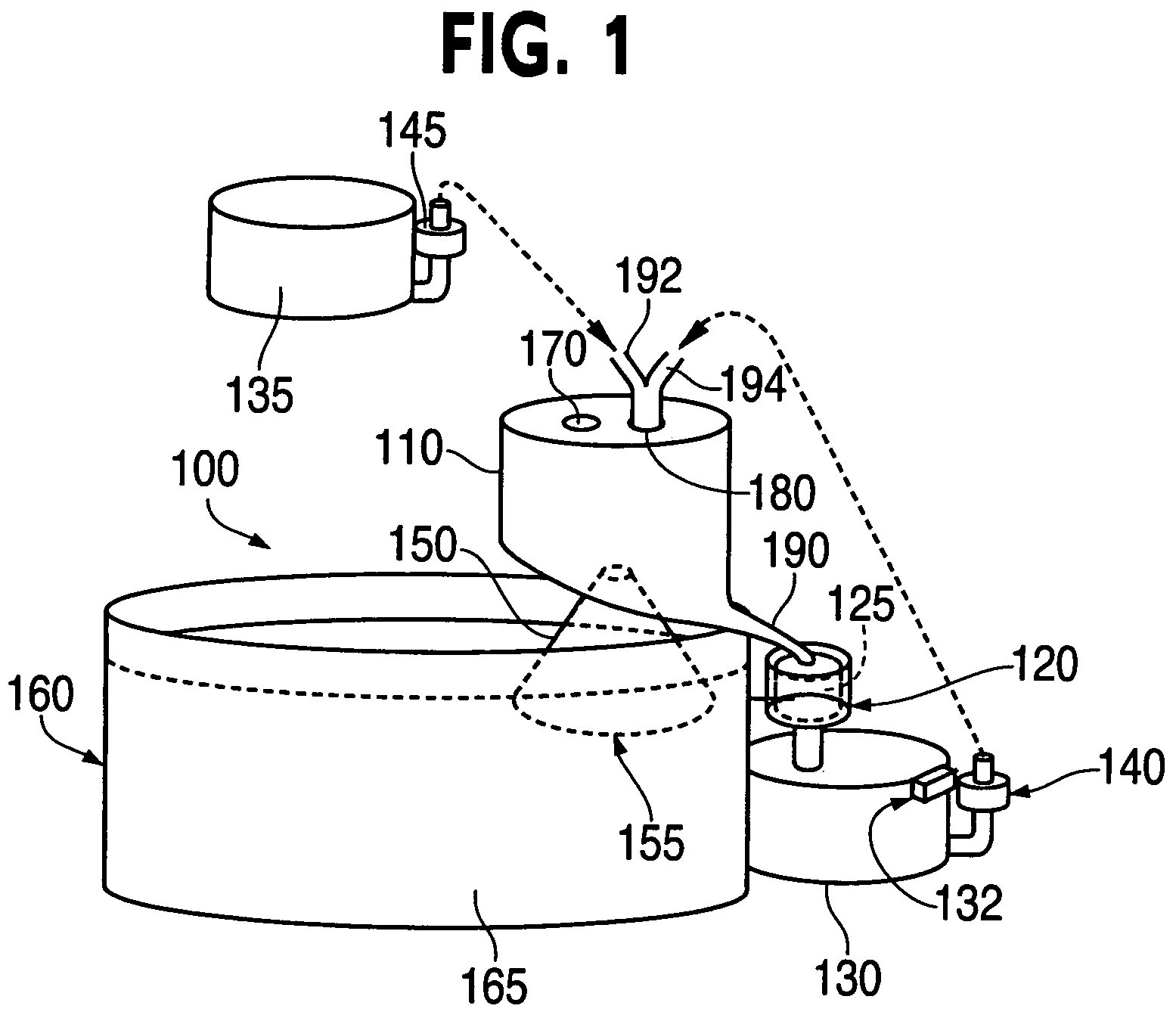Mosquito harvest trap
a technology for trapping and mosquitoes, applied in the field of traps for flying insects, can solve the problems of reducing the effectiveness of chemicals, and reducing the effectiveness of chemical use,
- Summary
- Abstract
- Description
- Claims
- Application Information
AI Technical Summary
Benefits of technology
Problems solved by technology
Method used
Image
Examples
Embodiment Construction
[0032]The invention will now be described with reference to the drawing figures, in which like reference numerals refer to like parts throughout. Referring to FIG. 1, an embodiment in accordance with the present invention provides a mosquito harvest trap 100 having a control unit 200, a holding chamber 110 and a water tank 160. The trap 100 is based on water column technology. This technology has become a practical option for mosquito control because of advances in printed circuitry and programmed chips for controlling and sequencing functions of multiple components in a device. The plan of the mosquito harvest trap 100 also utilizes a solar rechargeable battery 240 using solar panels 250, as well as water pump 140, air pump 410 and float switch 220.
[0033]The present invention includes an embodiment of the present inventive apparatus and method is illustrated in FIG. 1. An inverted, preferably, transparent plastic funnel 150 may be welded at one end into the bottom of a sealed, tran...
PUM
 Login to View More
Login to View More Abstract
Description
Claims
Application Information
 Login to View More
Login to View More - R&D
- Intellectual Property
- Life Sciences
- Materials
- Tech Scout
- Unparalleled Data Quality
- Higher Quality Content
- 60% Fewer Hallucinations
Browse by: Latest US Patents, China's latest patents, Technical Efficacy Thesaurus, Application Domain, Technology Topic, Popular Technical Reports.
© 2025 PatSnap. All rights reserved.Legal|Privacy policy|Modern Slavery Act Transparency Statement|Sitemap|About US| Contact US: help@patsnap.com



